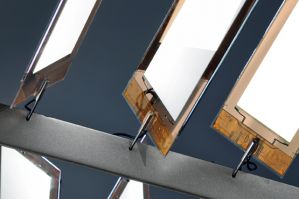Interview with Mary Kilitziraki, Fast2Light project manager
In April 2008, we had the chance of interviewing Mary Kilitziraki, Fast2Light's project manager. Fast2Light is an integrated (9 companies, 3 research institutes and 2 universities) R&D project that aims to research and develop light emitting foils based on OLED tech.
Q: What are the major goals of the Fast2Light project? What will you consider to be a big success in the project?
Fast2Light aims to lay the foundations for marrying large-area roll-to-roll technologies with the field of organic electroluminescence, for all necessary layers in an OLED device on foil. We aim to set in place all the experimental platforms that when integrated will produce a high quality lighting foil. Yet, these technology platforms can be used in other electronic devices. We will indeed think ourselves as successful if we develop and master the new large-area processes and demonstrate these in a 30cmx30cm lighting foil in 3 years time. But equally important, one of the successes of the project will be the exploitation of our results, on platform level, in other fields of electronic devices.










